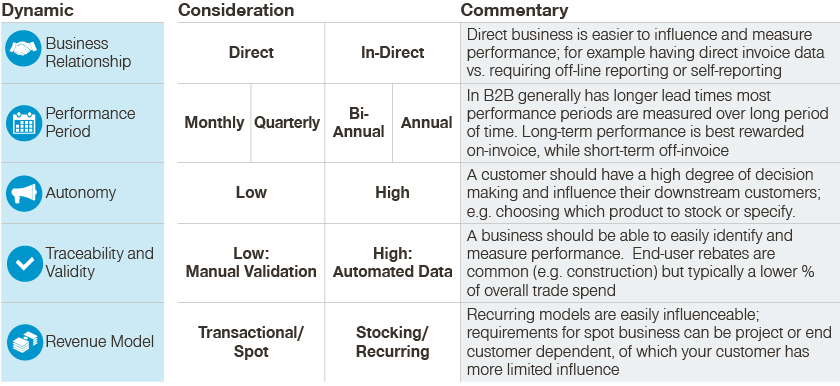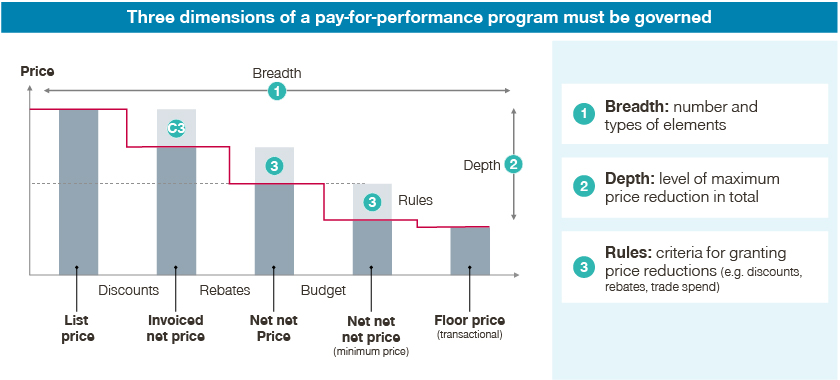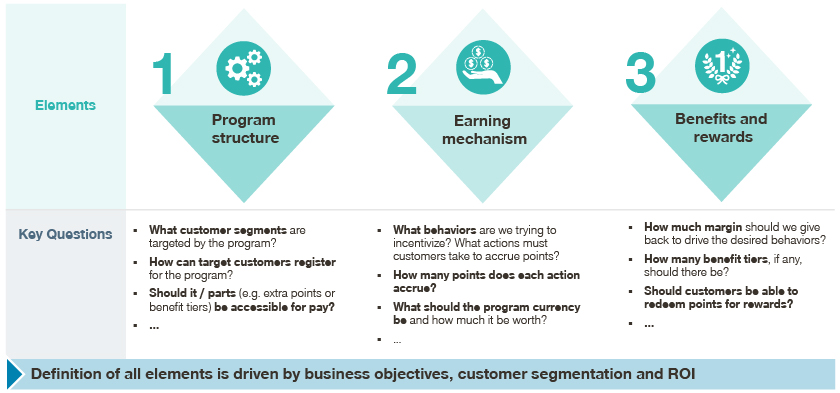Incentives are part of everyday life, steering individuals to desired behaviors. We reward children for eating vegetables and sales people for achieving quota. How we develop customer incentives is no different.
Going beyond willingness to pay
Any experienced pricer will tell you to establish prices based on “willingness to pay.” However, in B2B industries, the answer is more nuanced: one “price” is more complicated than a simple discount. Price often comprises various on and off-invoice elements including rebates, bonuses, payment discounts, trade, and so on. Second, many of these elements are often “not guaranteed,” requiring agreed conditions to be met. So, in addition to pricing based on willingness to pay, we price by “willingness to perform.”
What is pay for performance?

Understanding influence
To implement a pay-for-performance system, you need to deeply understanding the dynamics between the customer segments you are trying to influence. You wouldn’t try to compensate your sales team for behaviors or actions that are out of their control. The same applies to pay-for-performance systems. The key dynamics to consider include:
- Business relationship: Determining where in the downstream value chain you want to influence, including indirect customers (e.g., selling through distribution to an end customer)
- Performance period: Understanding how frequently you want to measure and reward
- Autonomy: Understanding the degree of autonomy your customers have in adapting to the desired behaviors
- Traceability and validity: Measuring what you are asking your customers to do
- Revenue model: Understanding the revenue pools/models that exert influence and whether certain revenue models (e.g., recurring) display a greater steering ability

Your playbook
We recommend a methodical approach to developing your pay-for-performance system:
- Determine you breadth: All systems must balance the number and types of elements you want to influence. Proliferation of several elements (e.g., volume growth, order efficiency) could cause your customers to lose focus.
- Depth: Establish and simulate your minimum and maximum discounts, both on- and off-invoice. Establishing an annual budget should be a close collaboration between pricing, sales, and finance functions.
- Rules: How your customers earn discounts and rebates should be clearly defined, communicated, and measured. Remember, if you’ve designed your system properly, a higher earned payout to your customer should be a win-win.

Evolving to loyalty
While loyalty programs are often seen as a B2C topic, more and more businesses are evolving their pay-for-performance systems into full-blown loyalty schemes. In a recent Simon-Kucher study, B2B customers indicated loyalty and rewards programs as the top three retention and business drivers. 85% of customers increase their spend with a supplier by 26% on average when a program is present.
When designing a loyalty or rewards program, it’s important to think about 3 key elements:
- Program structure: Are you trying to incentivize all customers or specific segments where tiers make sense? Should it/parts be accessible for a fee, like a shipping program?
- Earning mechanism: Should different amounts of points or bonuses be utilized to stimulate purchases of certain SKUs/services or in specific channels to reduce the cost of sale?
- Benefits and rewards: Pricing incentives are key, while experiential and service benefits create stickiness. What types of win-win benefits (e.g., advanced parts replacement or better warranties) show off your value proposition and reward loyal customers?

How Simon-Kucher can help
After a few years of inflationary price increases, customer retention is increasingly important. Simon-Kucher is the ideal partner to guide you through these changes. Our team of experts specializes in developing and implementing pay-for-performance systems that are tailored to your specific business dynamics. We help you determine the breadth and depth of elements to influence, establish clear rules, and even evolve your strategies into loyalty programs.
In today's dynamic industrial market, rewarding your top customers through pricing and loyalty incentives is more important than ever, and our strategies ensure you get the most out of your pay-for-performance schemes. Connect with our experts to explore how we can support your journey toward sustainable, profitable growth in the Industrials sector.
Explore all the insights from our B2B Masterclass
Unlock practical strategies in B2B pricing, sales, and marketing








